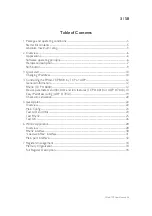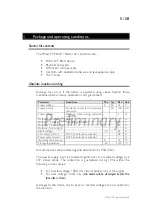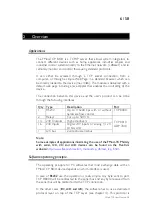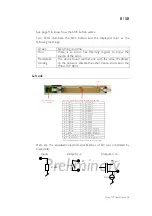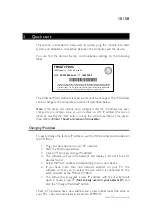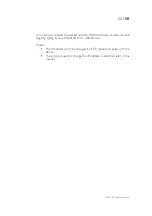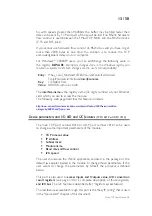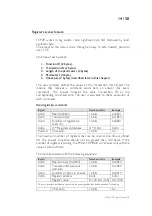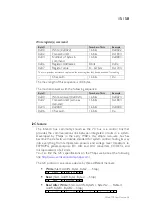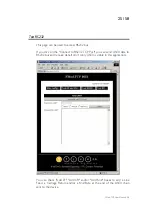
15 / 58
Write register(s) command:
Byte#
Number of bits
Example
0x00
Write (0x0022)
16 bits
0x0022
0x02 TransactionID
16
bits
0x1B34
0x04
Number of bytes in
command
16 bits
0x0003
0x06
Register Addresses
8 bits
0x02
0x07
Register value
8 — 64 bits
0x1234
The two previous entries are replicated for every register that has been asked for reading
… Checksum
16
bits
0x…
The max length of this sequence is 180 bytes.
The module answers with the following sequence:
Byte#
Number of bits
Example
0x00
Write Answer (0x0024)
16 bits
0x0024
0x02
TransactionID (same as
demand)
16 bits
0x1B34
0x04 0x0000
16
bits
0x0000
0x06 Checksum
16
bits
0x…
I2C feature
The Inter-IC bus, commonly known as the I²C bus, is a control bus that
provides the communications link between integrated circuits in a system.
Developed by Philips in the early 1980’s, this simple two-wire bus has
become the de facto worldwide standard for system control, finding its way
into everything from temperature sensors and voltage level translators to
EEPROMs, general-purpose I/O, A/D and D/A converters, CODECs, and
microprocessors of all kinds.
You can find the I2C’s specifications on the Philips web site at the following
link:
http://www.semiconductors.philips.com/
The I2C protocol can access a device by three different manners:
Write
(Start, AddW, Byte1, Byte2, …, Stop)
St
AddW
A
Bytes to W
A Sp
Read
(Start, AddR, Byte1, Byte2, …, Stop)
St
AddR
A
Bytes to R
nA Sp
Read After Write
(Start, AddW, ByteW1, ByteW2, …, ReStart,
AddR, ByteR1, ByteR2, …Stop)
St
AddW
A
Bytes to W
R A
AddR
A
Bytes to R nA Sp
FMod-TCP User Manual v.2.8



